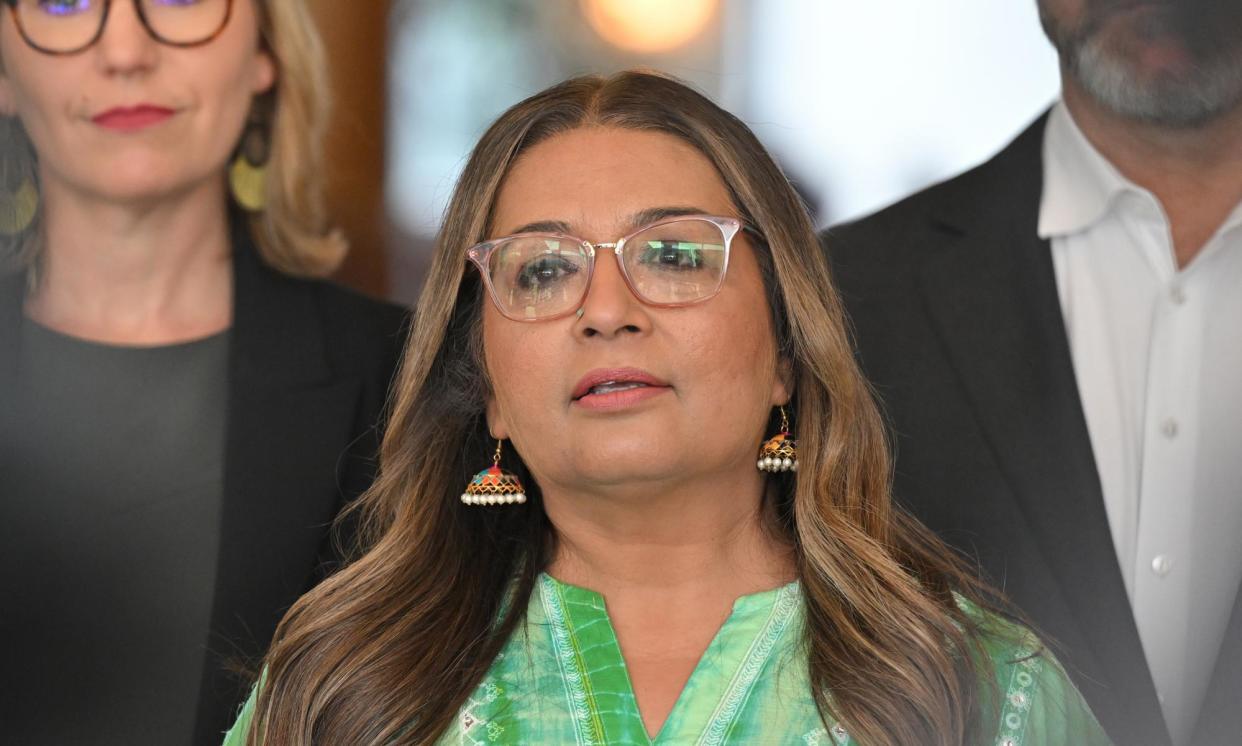Hecs/Help debt to rise by 4.8% in June as indexation lifts average loan by more than $1,200

Varsha Yaiman is 21 years old and already has more than $35,000 in debt. Not on a house, or a car, but a student loan.
Four years into her double arts/law degree, Yaiman said she and her peers find the future “truly terrifying”.
She’s among millions of Australians with student loans that will be hit by increases of more than $1,000 in June, new figures show, as calls grow for the commonwealth to act on a growing “debt spiral”.
Quarterly figures, released by the Australian Bureau of Statistics on Wednesday, revealed inflation grew by 3.6% over the year to 31 March, in large part due to a rise in education costs, which grew by 5.9%.
The repayment of Hecs/Help loans is tied to indexation, calculated by combining the consumer price index (CPI) numbers for the four quarters to March and dividing the number by the same figure for the previous year.
It places this year’s rate at 4.8%, down from a punitive 7.1% last year but still the second highest rise in more than a decade.
It means students with an average debt of $26,494 will have their loans increased by $1,272 when indexed on 1 June, on top of a $1,758 increase last year.
Related: Hecs help is on the way – but is it too little, too late to help struggling students? | The Agenda
Students with debts of $50,000 will face rises of $2,400, while students with $100,000 loans will be hit with a $4,800 increase. More than 335,000 students have loans in excess of $50,000, Australian Taxation Office (ATO) figures show.
Yaiman’s debt will rise by almost $2,000.
“We’re in a cost of living crisis, I’m currently renting, I have bills to pay,” she said.
“I’ve tried to make a contribution to my student debt. Many of my peers have as well. And in reality it doesn’t even make a dent.”
The university accord final report, released in February, acknowledged Australia’s Hecs/Help system could be “fairer and simpler”, adding Australians shouldn’t be deterred from studying because of the increased burden of student loans.
It recommended the commonwealth ensured loans didn’t outpace wage growth by setting the indexation rate to whatever was lower out of the consumer price index (CPI) and wage price index (WPI), as some MPs, including Zoe Daniel, have called for.
Guardian Australia understands this is the government’s preferred solution, likely to be announced ahead of the budget.
Other suggested tweaks included reducing student contribution amounts for low-income earners, changing the timing of indexation to deduct compulsory repayments first and interrogating bank lending practices to ensure student debt had no impact on applications.
The education minister, Jason Clare, has flagged he will respond to the accord’s recommendations in the coming weeks, however his colleagues have been more vocal.
Speaking on FM radio last week, the prime minister acknowledged there was “a range of areas where we need to do much better with the younger generation … and Hecs [the higher education contribution scheme] is one of them”.
Days later, the treasurer told reporters the federal government was looking at both student debt relief and unpaid placements in the budget.
“We do acknowledge that students are under pressure and if we can afford to do something to help on that front, that’s obviously something we’ll consider as we finalise the budget,” he said.
The Greens say proposed reforms don’t go far enough, instead pushing for the commonwealth to abolish indexation altogether and increase the minimum repayment threshold to the median wage.
It is now $51,550, about $6,000 higher than the minimum wage.
Related: Australia’s inflation rate slows less than expected to 3.6%, dimming hopes of interest rate relief
Deputy Greens leader and spokesperson for education senator Mehreen Faruqi said the “alarming trajectory” of rate rises showed a “clear failure of the current system”.
“Labor refused demands from the Greens to protect students from huge debt increases last year, but there is still time to stop the massive indexation hit coming again this June.
“No more kicking the can down the road.”
The education officer of the National Union of Students, Grace Franco, said young people studying today face futures where they would spend decades paying off their debts.
“We’re set to be the most indebted generation in history,” she said.
“The Hecs system is broken. It’s impacting student’s abilities to afford houses, to start families, and to continue further education.”
The shadow minister for education, Senator Sarah Henderson, said the commonwealth was “reaping dividends” from escalating student debt.
Since the Albanese Labor government entered office, debts have risen by more than 16% – equivalent to more than $12bn.
ATO data showed Australians paid a record $2.9bn in voluntary Hecs/Help repayments in the 2022–2023 financial year, up from $780m the previous year in a bid to escape indexation.
It was equivalent to a 272% increase in voluntary repayments.
“Hit by a crippling 7.1% increase in their student debts, 164,000 Australians made voluntary repayments averaging $17,636 in an attempt to pay down or pay off their debt,” Henderson said.
“Minister Clare’s lack of action on student debt is abysmal.”

 Yahoo News
Yahoo News 
